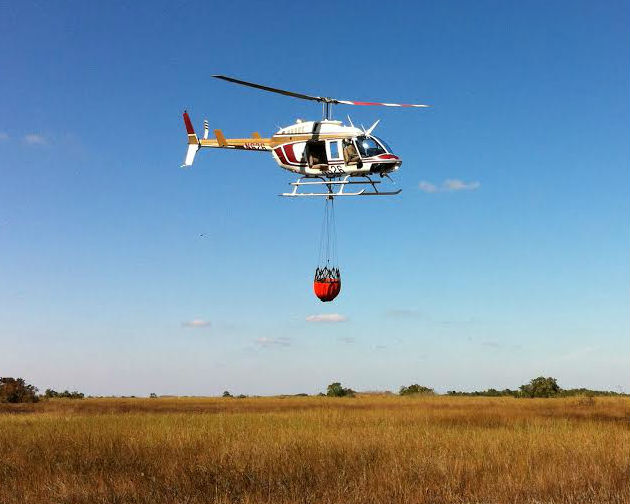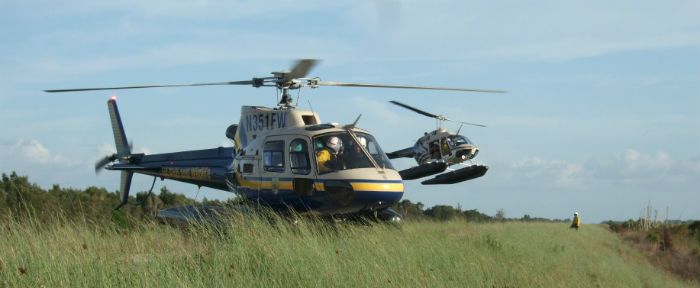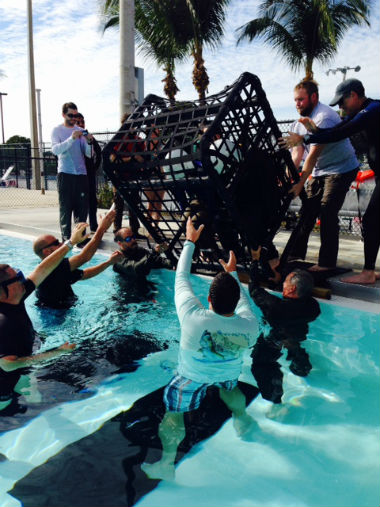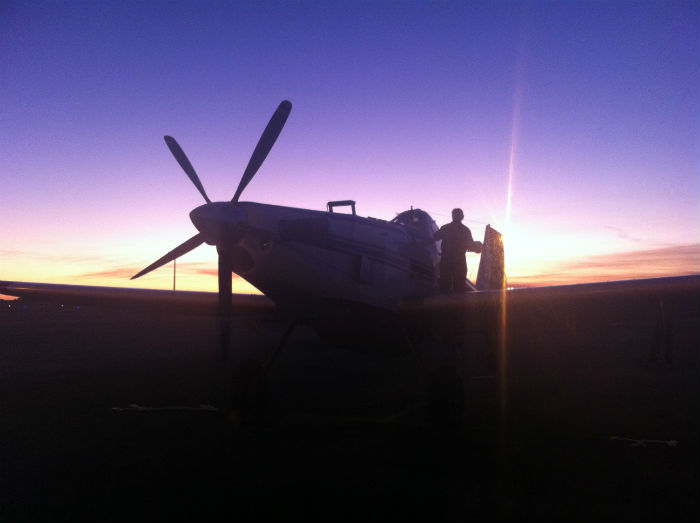
Many of the 1 million acres in Everglades National Park are inaccessible. The swampy terrain is not very conducive to the establishment of an extensive system of roads so park personnel often rely on helicopters to facilitate the accomplishment of a variety of tasks.
The park has a very active aviation program, occasionally using several helicopters in one day. They have contracted for an exclusive use contracted helicopter plus call when needed aircraft since the mid- to late-70s, but in April, 2014 acquired their own ship, a Bell Long Ranger. For now they are using pilots under contract, but are considering, AFMO Jack Weer said, hiring their own pilot. The aviation program is managed by a crew of five.

Approximately 70 to 80 percent of the 450 to 550 hours of aircraft time in the park each year is for research, alligator capture, bird surveys, hydrology, fisheries, vegetation surveys, and python location. About 20 to 30 percent is used for fire management, including recon of wildfires and prescribed fires, aerial ignition, and dropping water with a 108-gallon Bambi Bucket. In 2014, 241 hours were used by call when needed aircraft, and 236 by the NPS-owned ship. Other agencies also use aircraft in the park. Recently the EPA used two float-equipped helicopters for 21 days in order to land at about 120 spots to monitor environmental conditions.

Since the helicopter is generally used in south Florida which has numerous airports, they do not maintain a fuel or service truck like you would see at most fire-related helicopter operations, but they do have a helitack truck and can mobilize a fuel trailer if needed.

In the remote terrain aerial ignition is often used for prescribed fires. Recently fire personnel experimented with a technique for when a burn unit boundary is not a natural fire break. They ignite with the helicopter and after the fire gets going, they use a Single Engine Air Tanker (SEAT) to stop the spread near the intended unit boundary by dropping water. They do not use retardant in the Everglades, due to the fact that much of the park covered with or near water.

We have more information about the wildland fire program at Everglades National Park on our sister site, Wildfire Today.
